Sonos, well known for its smart speaker ecosystem, launched its very first headphones a few days ago, the Sonos Ace. While this rumor has been circulating for years, it's now official: the famous brand is offering its own Bluetooth headphones with noise cancellation. But while Sonos is now a leader in multi-room audio systems, the market hasn't waited for it, and already welcomes giants like Apple, Bose, Bowers & Wilkins, Sennheiser, and Sony, all of which offer excellent quality Bluetooth noise-canceling headphones. Does this new Sonos headset have what it takes to establish itself in this already crowded market? Let's find out without further ado… Unboxing the Sonos AceThe Sonos Ace headphones arrive in sleek packaging, as the manufacturer has become so accustomed to with its various products. It simply features a stylized drawing of the headphones, along with a color indication. These headphones are available in white or matte black, with varying degrees of metallic accents depending on the model.
The packaging also mentions compatibility with Dolby Atmos, which is quite promising :)
Inside, we find a case containing the headphones, which is thus perfectly protected.
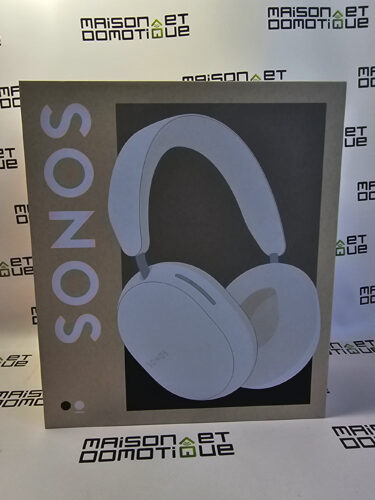
In addition to the storage case and the headphones, we also find a USB-C cable, as well as a jack/USB cable, which can be useful, especially on airplanes, for enjoying multimedia content.
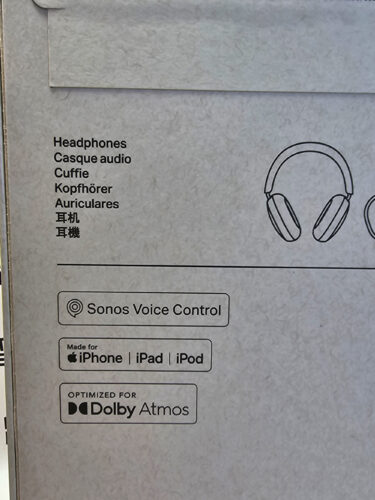
The Sonos Ace are over-ear headphones, and they're really very attractive.
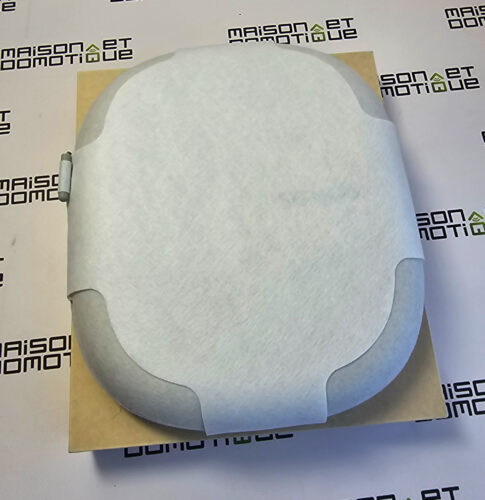
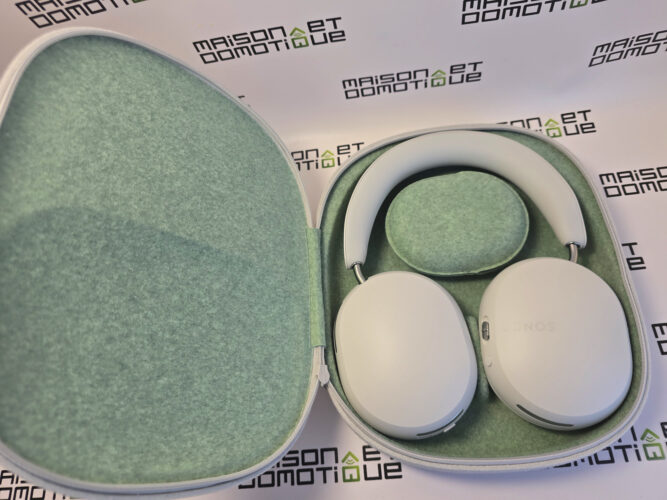
They're a bit like a mix between the WH-1000XM5 and the AirPod Max, with earcups that are more streamlined than Sony's and a slightly more square appearance, like the AirPod Max. At 312g, the Sonos Ace is lighter than the AirPod Max (385g), but a little heavier than the Sony WH-1000XM5 (250g).
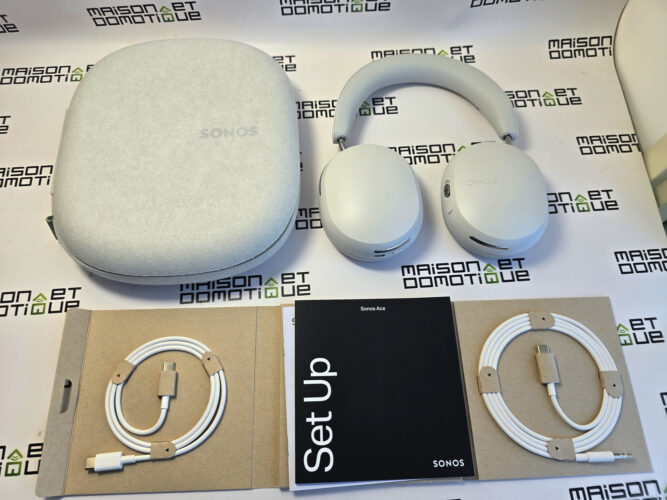
A Sonos logo discreetly adorns one of the earcups, only visible depending on the light. Here, we find all the discreetness of Sonos products, just as we like them.
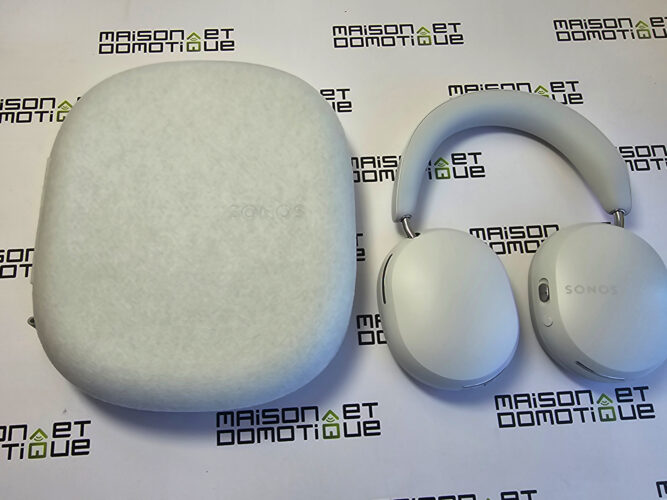
A few touches of metal complete the design, giving it a bit of a premium feel.
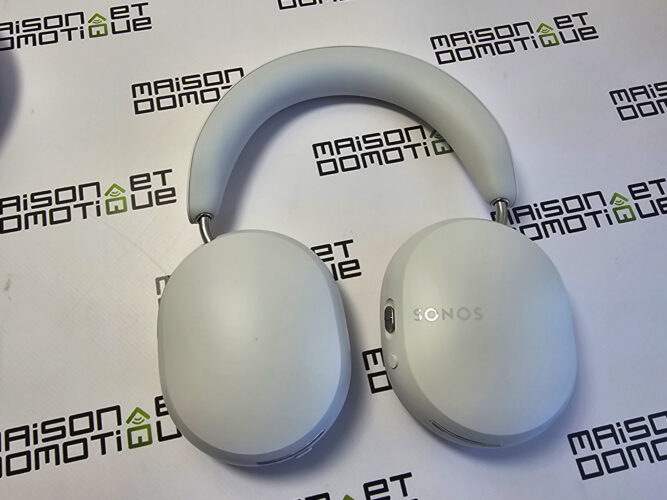
The mesh on each earcup is a different shade to more clearly distinguish left from right, so you don't have to worry about which way you're listening. This is always practical.
The earcups are soft to the touch and covered with an anti-fingerprint finish. They use memory foam covered with a layer of vegetable-tanned leather, which gives a comfortable feel.
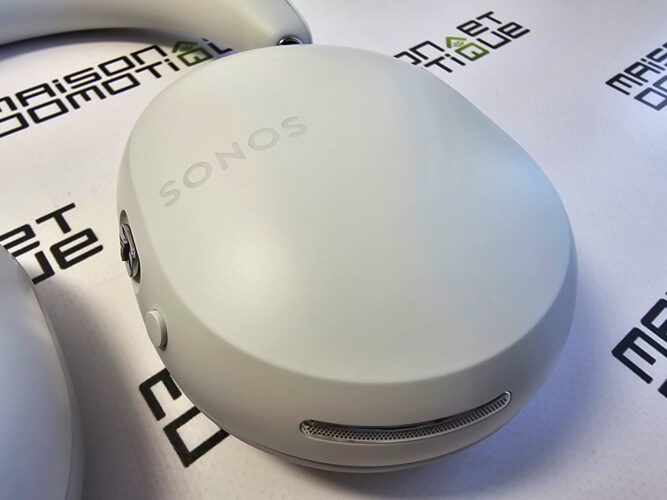
The adjustable headband uses a firmer structure of the same materials and is also quite comfortable.
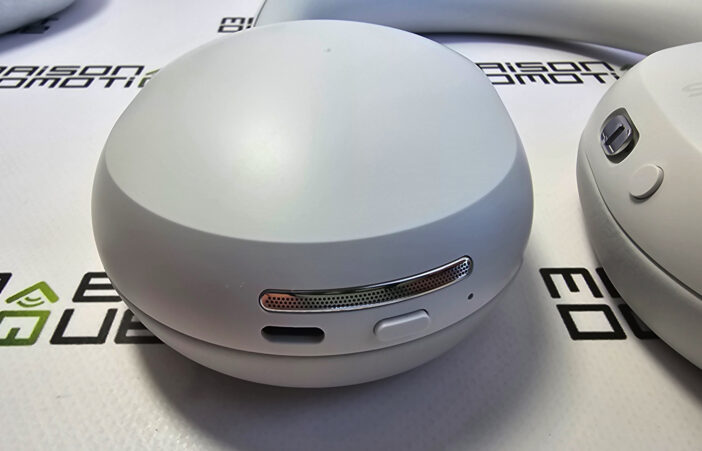
The hinge is hidden in the earcups of the Sonos Ace headphones, and allows you to rotate the earcups and adjust the height of the headphones. Here again, the manufacturer has kept everything discreet.
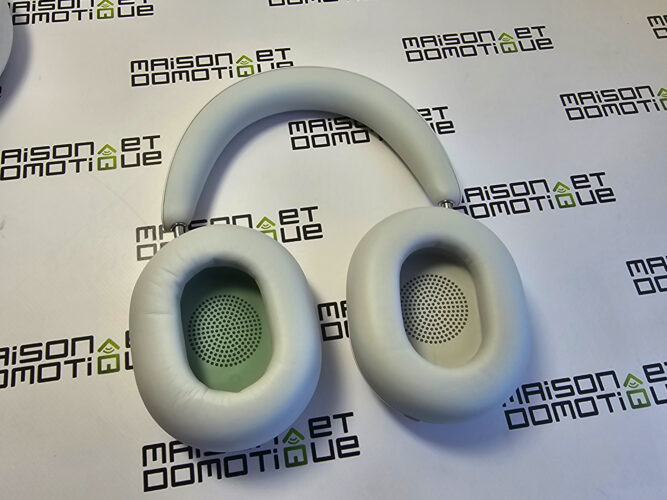
Let's move on to the controls. Sonos hasn't opted for touch controls here, but we don't blame them ;-)
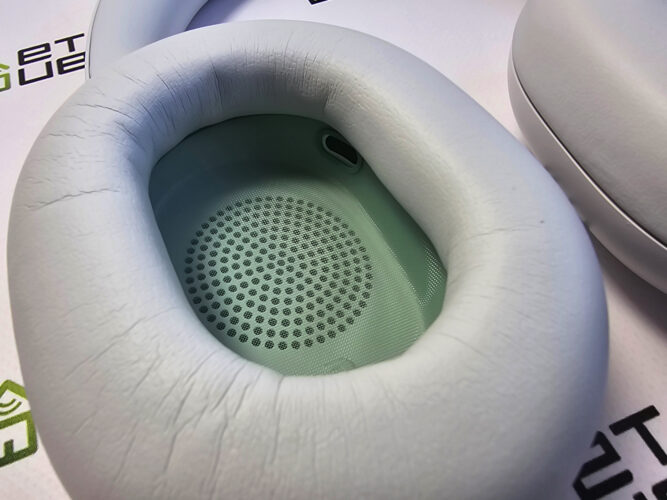
On the left earcup is a button for power and Bluetooth pairing. It's also where the USB-C port for charging is located.
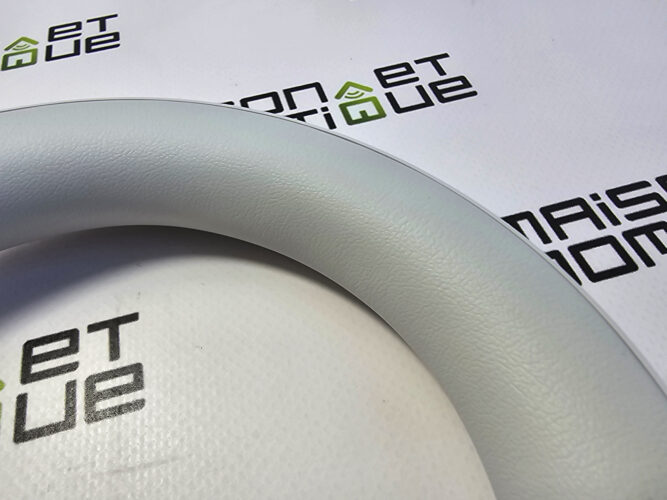
The right earcup has two buttons. One lets you cycle through noise reduction modes. The other is used for all other actions. You can slide it up and down to change the volume, and press it in different ways to control playback (pause, play, skip, answer calls, etc.). A long press lets you switch music between a connected Sonos Arc soundbar and the Ace headphones, and vice versa. You'll have to learn how to memorize the movements, but this single button saves you from having to search all over the headphones for controls.
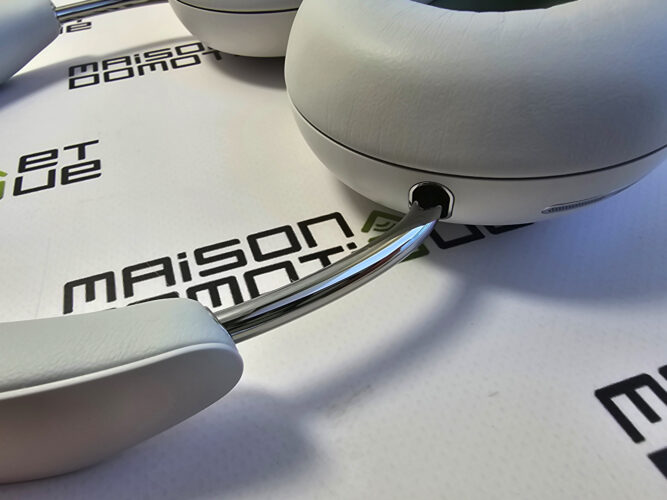
As with many other models, the earcups pivot flat for easier storage or carrying around the neck. However, they don't fold up, which inevitably takes up a little more space.
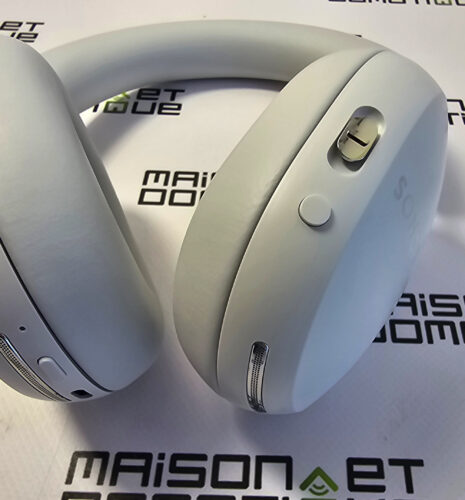
Note that the earpads are attached to the frame by powerful magnets. It will cost around fifty euros to replace them if necessary. But since earcups always wear out eventually, it's good to know they're easily replaceable!
The headphones come with a matching travel case made of recycled material, here in white with a very discreet logo.
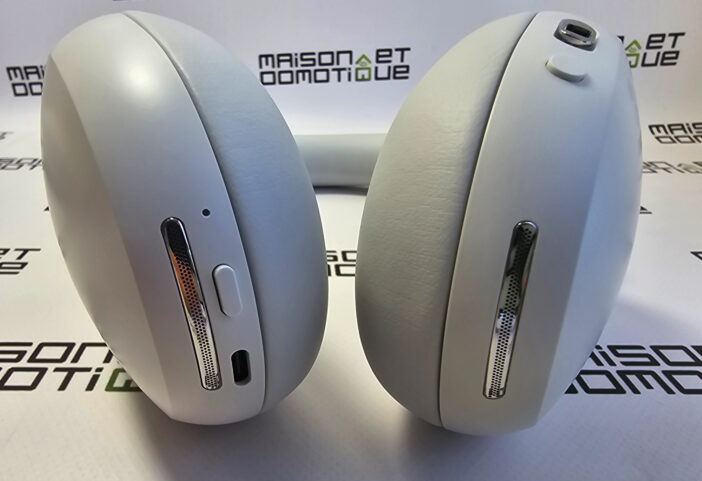
The case here has a pale green interior that reflects the color of the fabric on the right earcup.
Inside the case is a small magnetic pouch containing the USB-C charging cable and the USB-C to 3.5 mm cable. The pouch's positioning also helps guide the headphones into the correct position for storage.

Aesthetically, it's Sonos! Nice and sleek. Now let's move on to the features and usage!
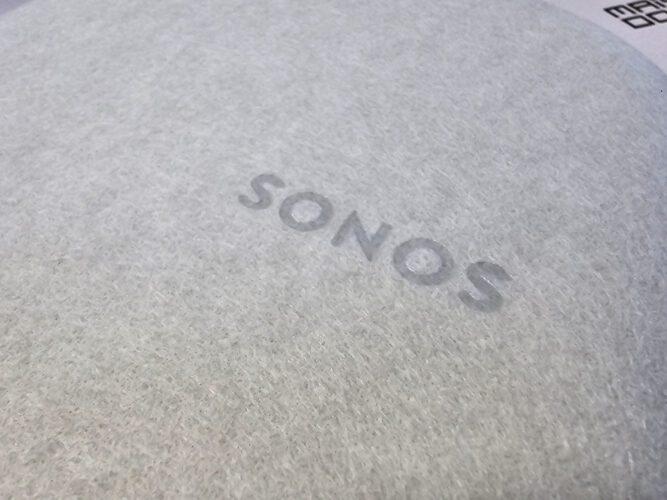
Sonos Ace: In Use
The Sonos Ace headphones don't require the Sonos app to be set up: they can be paired and used like any other Bluetooth headphones, making them easy to use. But you get more features if you use the app; it would be a shame to miss out!
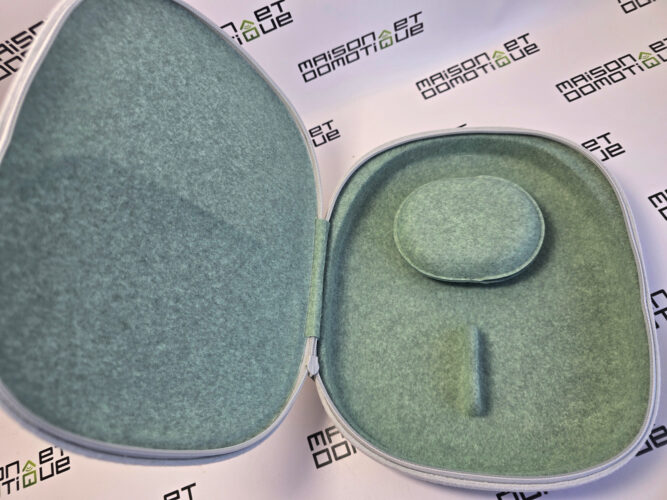
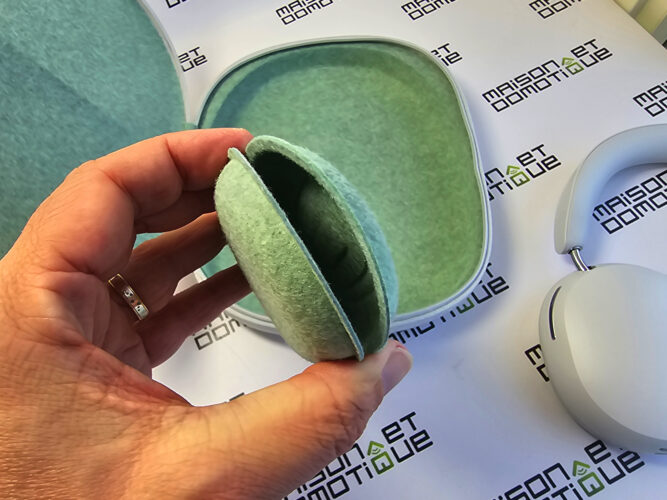
Here, we're using the traditional Sonos app, which has received an update to now support headphones.
The headphones are quickly detected by the app and added to our account.
As is often the case, an update is offered, which we let happen quietly.
We then find our headphones among the available Sonos devices.
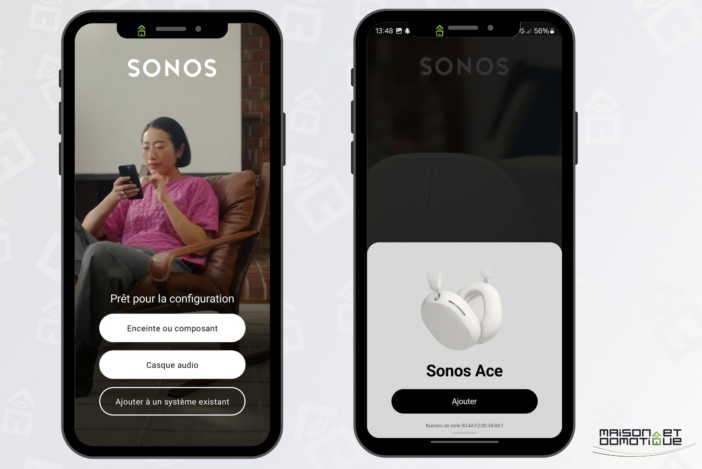
The app allows you to switch between noise control modes (Noise Cancellation, Aware Mode, and Off). While you can, of course, use the button on the right earbud to do this, the app also lets you decide which of these modes you want the button to offer. For example, you can switch between noise cancellation and full deactivation, bypassing Aware Mode altogether if you wish. However, it's not possible to adjust the noise cancellation level; you'll have to make do with these three presets.
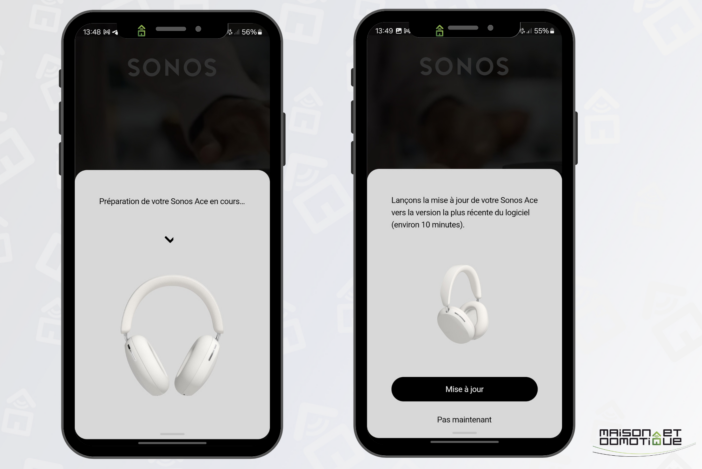
The app offers various features, such as adjusting the equalizer to reduce or increase bass or treble at low volumes, or enabling and disabling head tracking. This last feature is quite surprising, as the sound shifts from one ear to the other when you turn your head, for example, as if the sound were coming from a fixed point. The headset supports spatial audio with dynamic head tracking for music and movies with apps that support Dolby Atmos. Dolby Atmos and 360 Reality Audio tracks from Apple Music, Amazon Music, Tidal, and Deezer are all supported, allowing you to enjoy spatial audio regardless of the streaming service you use. And we have to admit, the sound is pretty impressive!
The app also offers various settings for headset detection, such as pausing content when you remove it and resuming it when you put it back on. Another separate setting is also available for calls.

When adding the headset to the app, a few screens also explain how the headset controls work, for those who don't want to read the manual ;-)
Volume control, ambient noise management, and even voice assistant control if needed. Everything is possible with just a few buttons.
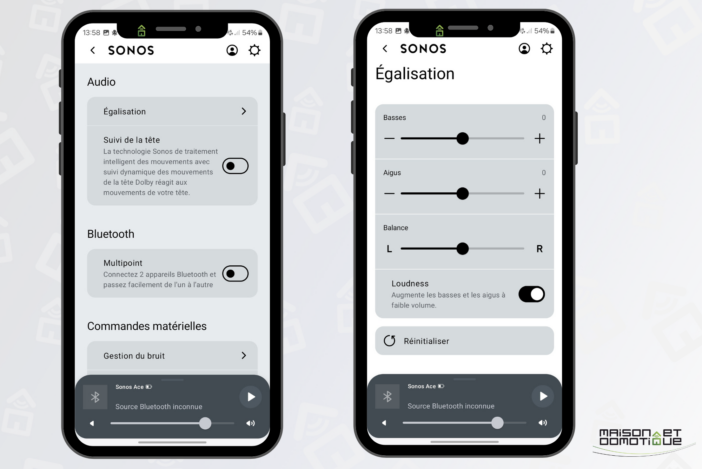
When we talk about Sonos, we naturally think of its entire connected speaker system. And of course, these Sonos Ace headphones can integrate with the Sonos home theater system, thanks to a practical “TV Audio Swap” feature and the new TrueCinema calibration for an immersive and personalized Dolby Atmos experience!
This feature allows you to stream audio from your Sonos soundbar to the Sonos Ace headphones with the press of a single button, and vice versa. This allows you to listen to movies and TV shows privately at night without disturbing the rest of the house. This TV Swap feature was available from launch, but currently only works with the Sonos Arc and iOS devices. It will soon be compatible with other current Sonos soundbars (Beam Gen 2, Beam Gen 1, Ray, but unfortunately not the Playbar). Not having a Sonos Arc soundbar (€999 all the same…), I unfortunately wasn't able to test this feature, although I would have been very curious to put it into practice :/
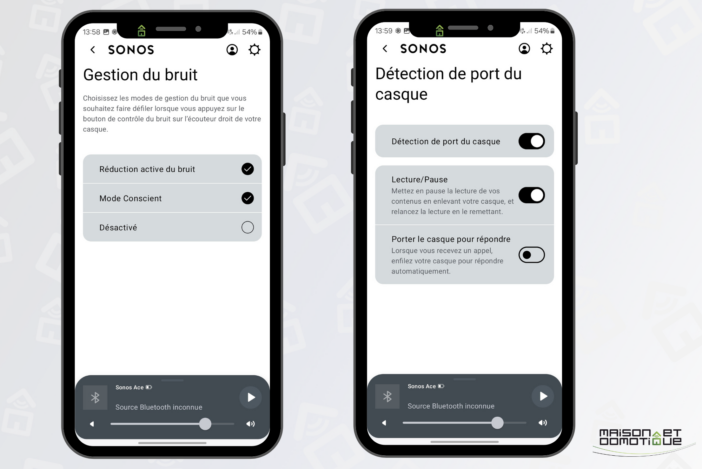
TrueCinema calibration is another new home theater feature that uses new software to adapt the acoustics of your headphones to your room, providing a more spatial and immersive experience when watching Dolby Atmos soundtracks through a Sonos soundbar and TV system. The idea is to not feel like you're wearing closed-back headphones, as the sound is adapted to your room in the same way your Arc is calibrated to your room's acoustics. Very promising, but TrueCinema is expected later this year, so it's not yet possible to take advantage of it.

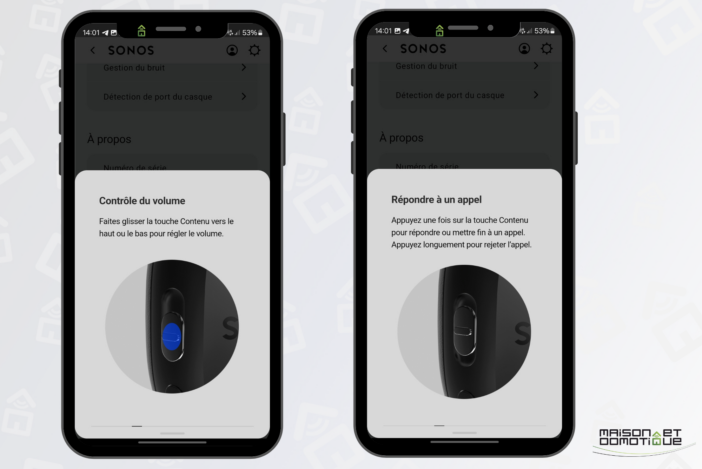
That's it for the app-related features.
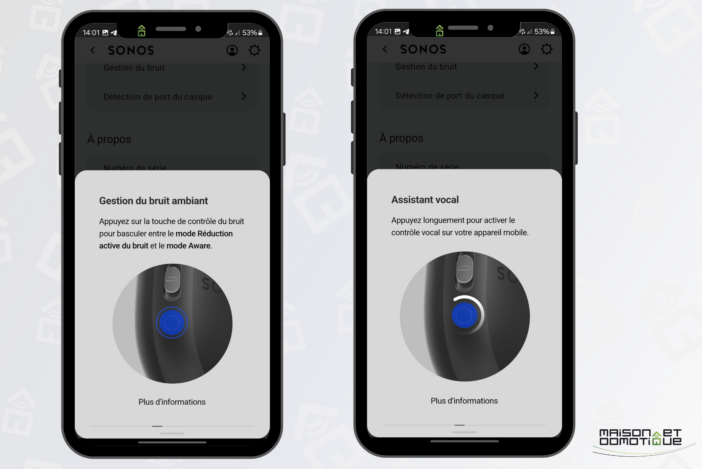
So back to using these headphones.
Equipped with Bluetooth 5.4, it can play lossless audio files from compatible sources thanks to Snapdragon Sound's aptX Lossless support. However, the Ace doesn't yet support next-generation codecs such as Auracast and LE Audio. These are still underused, but Sonos isn't ruling out integrating them later if they become more widespread.
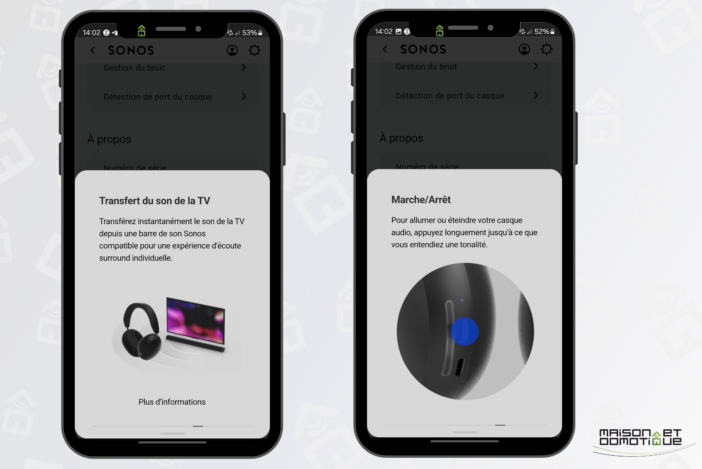
In terms of sound performance, the Sonos Ace headphones are impressive, as on this track, “Fallin'” by Alicia Keys, which really packs a punch. During a short month of testing, I listened to many different tracks, of all genres. The bass is well-present, as Sonos fans have come to expect, while the vocals are crystal clear, and the midrange is pleasant and detailed. The sound is well-balanced and incredibly detailed, from the guitar plucks at the beginning of Sheeran's “Shivers” to Eilish's deep breathing in “What Was I Made For.” We're in for a treat! Sonos fans will be delighted, as the sound quality is very similar to what we're used to hearing from their speakers.
As mentioned above, these headphones also support spatial audio and Dolby Atmos, as well as head tracking, which delivers a compelling experience when listening to compatible tracks and movies, keeping you at the center of the song or action, even if you're moving around.
The noise cancellation (ANC) is also excellent, thanks to four microphones hidden in each earbud. There's no suction, and you don't feel like you're in a fishbowl when you turn it on. You'll still hear the loudest passengers, but they'll be muffled, and background noise will be completely drowned out (especially engine noise). If you've never tried ANC before, you'll be hooked. If you've already tried it on other models, let's just say that the ANC falls a little short of a Sony WH-1000XM5, for example. But it's nothing to be ashamed of! I've had the opportunity to use it on several train journeys, and it's truly comfortable!
Another important point: battery life. The Sonos Ace offers 30 hours of battery life, with Bluetooth and ANC enabled, which is pretty excellent! Not to mention that the headset's fast charging feature allows for 3 hours of listening time in just 3 minutes! You shouldn't run out of power :)
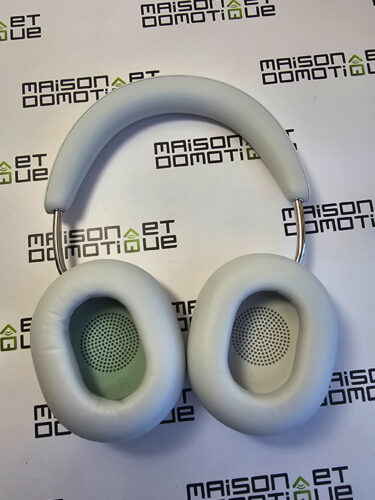
One last detail: the Bluetooth Multipoint function is also available, which allows you to connect to two sources simultaneously (a smartphone and a computer, for example). The headset connects automatically, and it's very easy to switch between devices. It's always very convenient! Finally, a word about comfort. Personally, my ears fit perfectly in the earcups, without being squashed, which is quite comfortable. The headset is just right to stay in place, without exerting any unpleasant pressure. I wore them for several hours straight, listening to music while working or watching movies. The headset is comfortable and doesn't get too hot, which is appreciated in the current hot weather. Conclusion Expected for about five years, these Sonos Aces are a wonderful surprise! They offer a pleasant and comfortable design, excellent sound performance, and a decent set of features that make them an excellent purchase for anyone looking for over-ear headphones (and not just Sonos fans). As expected, Sonos has made a superb pair of headphones here, and I loved being able to test them! The price is, however, quite high, since their retail price is €499. That's more expensive than Sony's excellent WH-1000MX5, which is among the best on the market, and available for only €329.The TV Audio Swap feature, however, could be an interesting selling point for those who already have a Sonos ecosystem. And TrueCinema could also add value. It's a shame the feature wasn't available at the time of the headphones' release, to score a few more points against the competition.



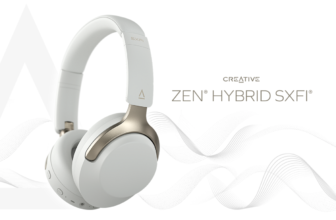

Please remain courteous: a hello and a thank you cost nothing! We're here to exchange ideas in a constructive way. Trolls will be deleted.